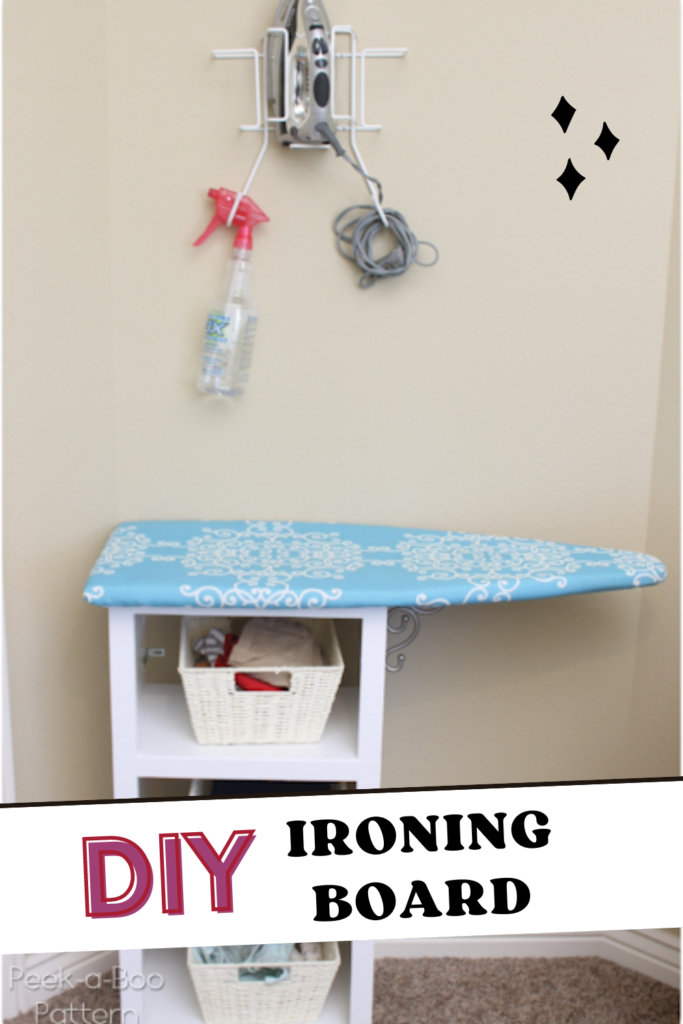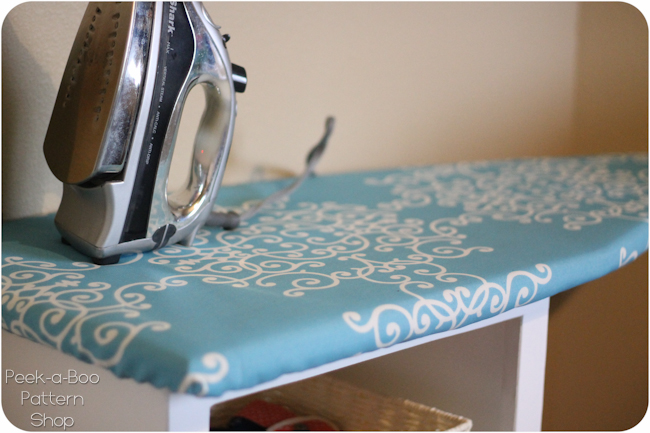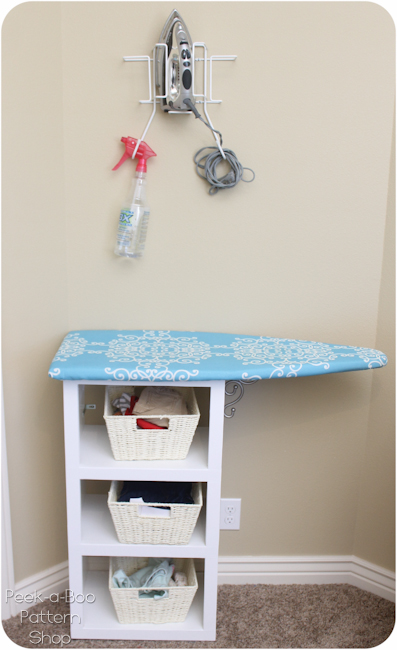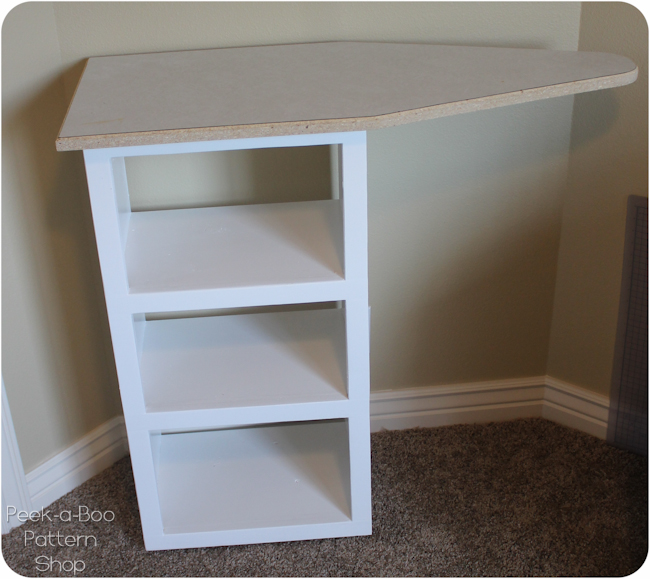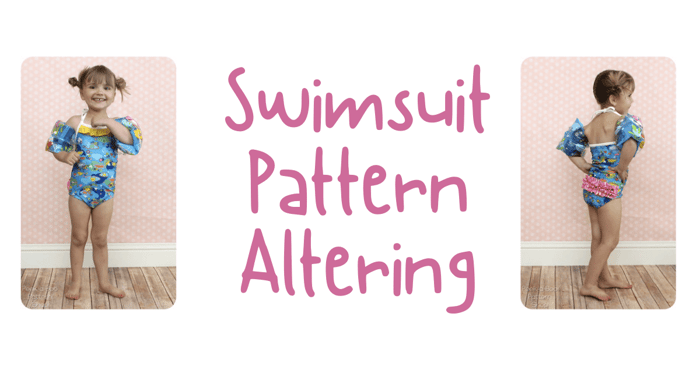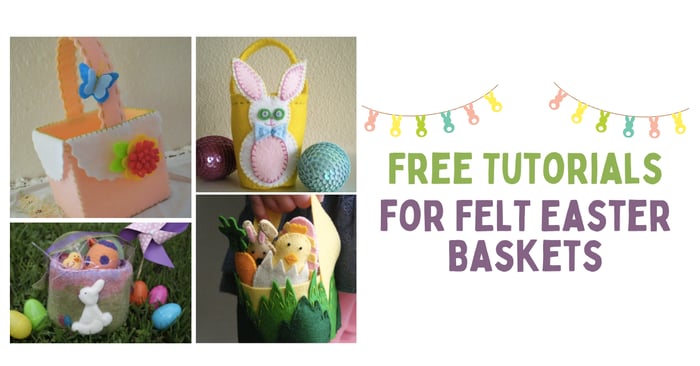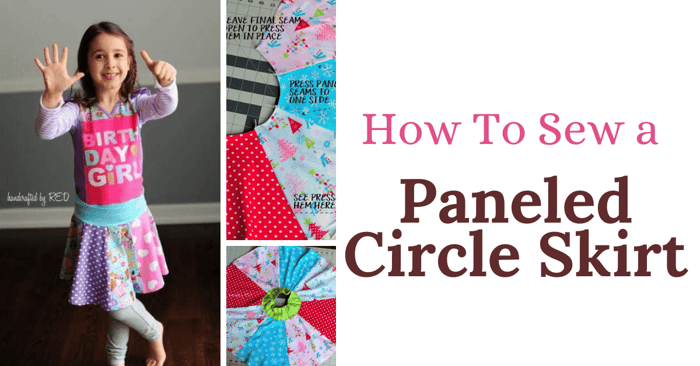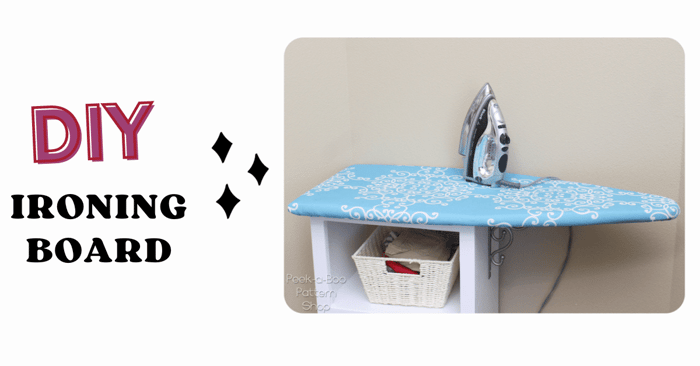
DIY Ironing Board: Simple Steps to Make One at Home
Today I’m here to show you how to make a DIY Ironing Board. Is your sewing space small? Maybe too small for the standard 54″ board that we typically see. Or maybe you want to make better use of the space under the ironing board – after all those metal supports don’t provide very good storage! Or….maybe you just want to make your sewing space nicer with a custom ironing board. Or…maybe you’re like I was and worried that your small children will knock down your board. Whatever your reason – this DIY Ironing Board tutorial is for you.
My husband made this ironing board for me….and I still use it over 8 years later. If you sew or quilt frequently like I do then you really need one of these for ironing. Let me show you how it’s done.
DIY Ironing Board
Pressing or ironing is an essential step in sewing and I used to HATE it. With 2 toddlers in the house I couldn’t ever leave my board out without worrying about them knocking it down and getting clunked in the head with an iron. Not to mention that ironing boards are huge and my office really doesn’t have room for one. So….I came up with the DIY Ironing Board.
DIY Ironing Board Tutorial
Amazing husband to the rescue! He built a simple shelving unit with a wood ironing surface (MDF) on top. It’s braced underneath the pressing board overhang and bolted into the wall to keep it from tipping. I have a simple iron holder mounted on the wall to keep my iron safely out of reach when not in use. I use the hooks meant for the ironing board for my spray bottle and cord and quite often I hang a pair of scissors there as well.
And no, I’m not left-handed but with the layout of my office this was the best way to fit it in (there’s a doorway on the other side and it’s kind of an odd wall). Luckily that hasn’t really bothered me much. Probably from my lack of ironing in the past…no chance to form much of a preference 🙂
If you’re building your own board, you can of course choose whatever dimensions you’d like. My station has shelves that are 17″ wide x 33″ tall x 12″ deep. The diy shelves were built with plywood and a hardwood face. Of course, if you don’t want to build your own shelf for this ironing board, you could also get a new shelf from IKEA or another furniture store re-finish one from around the house or a thrift store.
The ironing surface is 36″ long x 15″ wide. This is a perfect size for most of the pressing I do with children’s clothes and smaller fabric cuts. If you mostly work with larger pieces of fabric you may want a larger work space. The ironing surface was built out of MDL (medium density laminate) – it’s basically a particle board that has a white laminate on top.
After my husband cut it to length he drew his own pattern to get it into the shape of an ironing board. After cutting he used a router to finish along the edge of the top ironing board and make it smooth.
To support the underside of the long side of the board my husband ran some 1x lumber from the top of the shelf out to support the underside of the board (you can see these board supports in the pictures below). You can also see above that he used a decorative L Bracket between the board shelf unit and the top of the ironing board for support.
Once the DIY Ironing Board base was built I took over the rest of the project 🙂 I wrapped the entire ironing table in batting to give it the board a little cushion before I put the ironing board cover on. 
I just stapled the batting in place on the underside of the board using a regular staple gun. 
Next, I made a pretty cover for the Ironing Board using home decor fabric. I just laid my fabric over the ironing board and cut around it leaving 3 to 4 inches of fabric overhanging over the board edge. 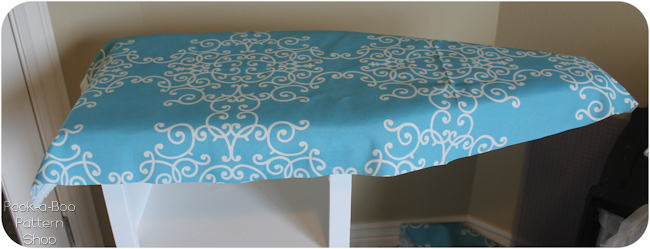
To prevent bulk in the corners I cut a little square out of the 2 back corners of the fabric. 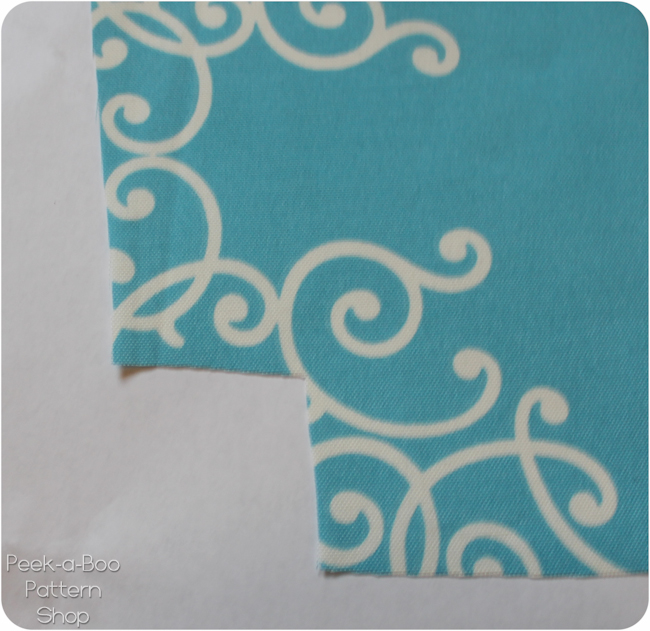
And then with right sides together I sewed up each corner of the fabric. 
Next, I serged my fabric edges and folded over 1/2″ to make a casing. You’ll notice there’s quite a few little tucks and gathers along the fabric corners and that’s fine. It will all be on the underside of the ironing board. 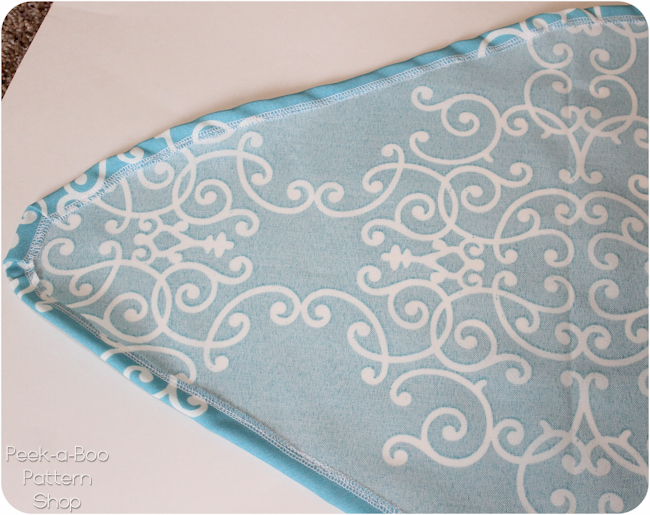
To complete your new cover, thread some 1/4″ elastic or elastic cording through the fabric casing and try it on the ironing board. Pull until it’s snug and secure your ends (I used cording so I just knotted). And it’s ready to go!
I hope you enjoyed our ironing board tutorial today! No more excuses for skipping the pressing now 🙂
Selecting Suitable Fabric and Batting
When choosing fabric and batting for your DIY ironing board, consider the benefits of cotton fabric. Known for its heat resistance and durability, cotton is a popular choice. You can select a fabric pattern or color that complements your sewing room or personal taste. For the padding, cotton batting provides a smooth ironing surface. Opt for cotton batting with a higher loft if you prefer extra cushioning. Remember to pre-wash both the fabric and batting to prevent shrinkage and ensure a proper fit.
Choosing the Right Board
When choosing the right board for your DIY ironing board, there are a few important factors to consider. First, opt for a sturdy plywood board that can withstand the heat of an iron. Next, think about the desired size of the board based on your ironing needs and available space. Choosing a board with rounded edges for safety and comfort is also a good idea. Ensure the board is smooth and free of rough surfaces that could damage fabrics. And if possible, go for a lightweight board for easier handling.
How Does a DIY Ironing Board Enhance Your Ironing Experience?
Enhance your ironing experience with a DIY ironing board. Save money by creating your own and customize it to fit your needs. Utilize small spaces efficiently with a portable board. Increase surface area for better effectiveness. Conveniently place it on any sturdy surface like a kitchen table.
Conclusion
Making your DIY ironing board can be a fun and rewarding project. Not only does it save you money, but it also allows you to customize the board to fit your specific needs. Following the step-by-step guide, you can create a sturdy and functional ironing board that will enhance your ironing experience. This has been a great idea for me that has allowed me more flexibility and functionality than a regular ironing board.
Thank you for joining us today! If you'd like more ideas, then I'd encourage you to take a look at our tutorial for a Portable Ironing Board made out of a TV Tray. Before you leave, also make sure to join our Facebook Group to share what you make and see what new tutorials and patterns we have. You can also stay in touch by following us on Instagram and Pinterest. Happy Sewing!
